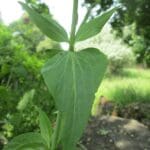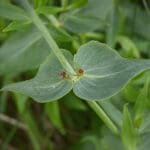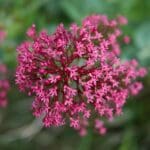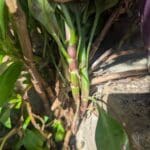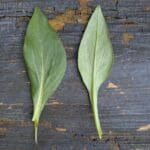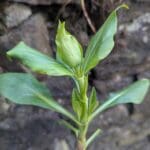Red Valerian / Spring / Summer / Edible
Red Valerian is one of those plants you see growing out of walls and cracked pavements, it’s lovely to look at and is edible, although quite bitter. It’s not related to the Valerian that’s used in sleepy tea though.
Common Names
Red Valerian, Jupiters beard, kiss-me-quick, foxes brush, devils beard, drunken sailor, pretty Betsy
Botanical Name
Centranthus Ruber
Scientific Classification
Kingdom – Plantae
Order –Dipsacales
Family – Caprifoliaceae
Physical Characteristics for Red Valerian
Red Valerian is a perennial herb growing in dense upright clusters to 0.9 m (3ft) by 1 m (3ft 3in). It can appear more like a plant or a shrub depending on conditions
Leaves
The smooth, mid-green leaves are long oval shaped, starting out in rosettes in spring and then growing in opposite pairs on the stems as they emerge and grow tall. The lower ones can have a short petiole or stalk, while the upper leaves tend to attach straight on to the main stem.
Flowers
The flowers grow from June to October in large showy clusters at the top of the stem. They are most often a deep reddish pink, but can also be red, paler pink, lilac or white. The individual flowers are very small, around 2mm across. Each flower has 5 fused petals joining a tube or spur on the back, arranged unevenly. The flowers are attractive to many kinds of insects and attract various species of butterflies and bees – though the strong smell is not so attractive to humans, sometimes being described as sweaty.
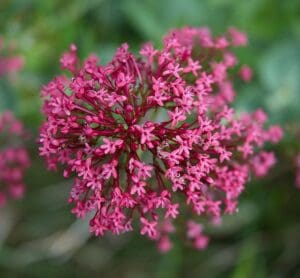
Stems
As the plant get more mature the tall, smooth, upright stems become woody at the base, sometimes giving a shrubby appearance.
Habitat
Originating around the Mediterranean, it is believed to have been introduced from Mainland Europe in the 17th century, it is now widely naturalised in the UK and many other parts of the world. As it thrives in warm, dry conditions it is more common in the South than the far North of the UK. It is often planted in gardens but can tolerate poor, alkaline rocky and sandy soil so can be found in a broad range of habitats, including in disturbed soil such as urban wasteland and in exposed sandy conditions on the coast. As it can tolerate alkaline mortar and cement, it is often seen growing out of old walls.
Known hazards
None known.
Could be Confused with
It can be confused with True Valerian (Valeriana officinalis), which usually has paler pink to white flowers and pinnate leaves. Unlike red valerian, the pale flowers of True Valerian have a less prominent spur on the back of the flower, rounder petals and three anthers visibly poking out. You could also confide this with Yarrow, which has very feathery leaves and a textured ‘middle’ to the flower.
Edible Uses
Young leaves – raw or cooked. They can be added to salads or mixed with other leaves and cooked as a potherb. They can be rather bitter. The root can be used in stews or soups.
Notes on Herbal uses
Red Valerian is often confused with True Valerian (Valeriana officinalis) which is a famously powerful herb. Red Valerian is sometimes used for sleep and relaxation however it has no proven medicinal properties
Find out more about making herbal medicine here



